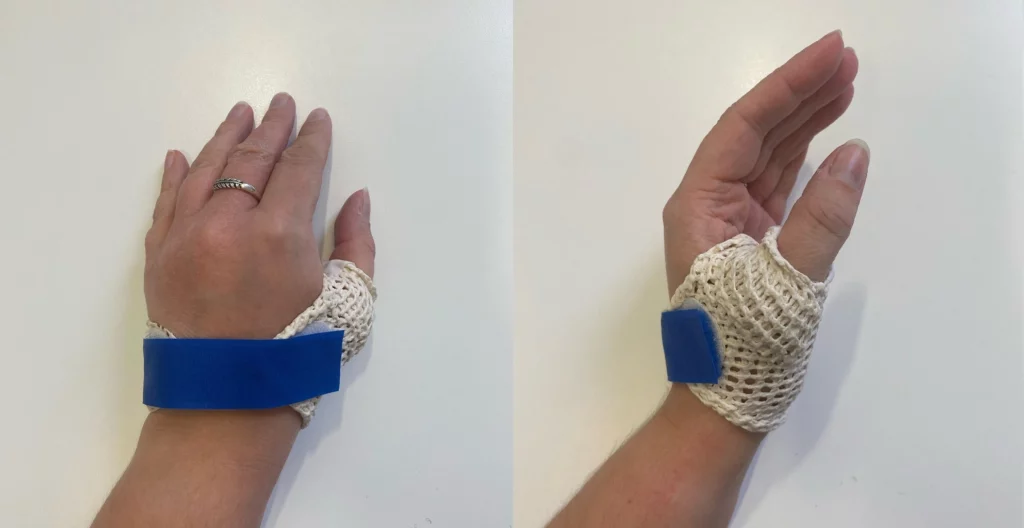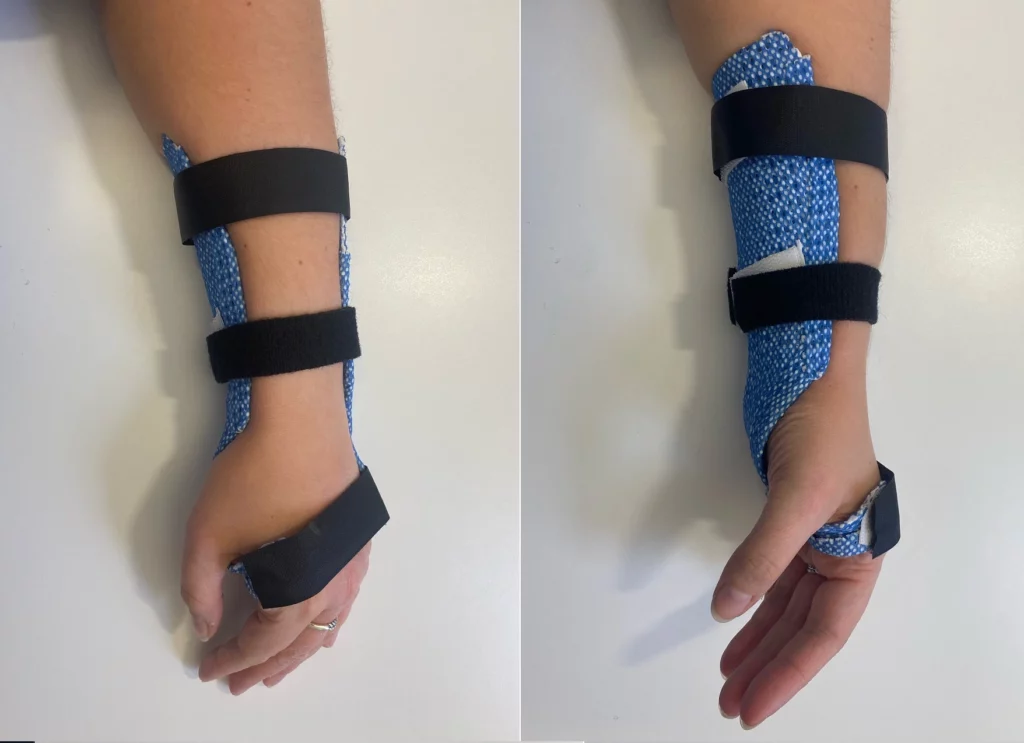With the Ski season 21/22 now well under way, people are heading to the slopes!
Skiing and snowboarding are two of the most popular winter sports, however with all sports there’s a risk of injury. When we think of snow-sport injuries we normally think of knees and shoulders. Hand and wrist injuries are quite literally shaken off. However, commonly our hands are what we use to break the fall!
Here Jennifer Parr explains the common hand and wrist injuries involved with skiing and snowboarding, and some tips to try to prevent them happening in the first place:
Skiers thumb
The most common hand injury from skiing is a dislocation of the thumb joint. This is often caused by the loop of the ski pole being caught around the wrist, and not being able to drop the pole when you fall. This causes the thumb to bend outwards, causing an injury to the ulnar collateral ligament at the base of our thumb joint (MCPJ).
If you have thumb pain after a fall, it is important to get these injuries assessed by a hand surgeon to assess the extent of the injury. Most common symptoms would be swelling, pain, reduced range of movement and reduced ability to pinch between your thumb and index finger.
A sprain of the ligament is treated by hand therapists in a custom made splint to prevent the base of the thumb moving while the ligament heals for 4-6 weeks, however a full tear of the ligament can lead to a stenor lesion – this is when the two ends of the ligament cannot meet together because of a muscle belly that has got in the way.
A stenor lesion has to be surgically repaired, and you will then be referred to the hand therapists to rehab your thumb back to full mobility and strength, which may include a wearing a custom-made splint for a period of time.

These types of injuries are often ignored by people with the assumption it will heal on its own, however it is important to get it seen to early, to prevent long term difficulties with pain/function and stability of the thumb.
Ways to avoid Skiers thumb:
- Don’t put your hand through the loop of the ski pole while skiing – grip the loop along with the pole grip.
- Drop your pole when you fall.
- Try to avoid putting your hand down to prevent a fall.
Snowboarders wrist
The most common injury from snowboarding is a wrist injury, as the natural reaction to falling backwards is to put your hand out and stop yourself. This blow is increased due to the limitation of balance when your legs are both strapped to your snowboard, compared to skiing where you can try to steady yourself by putting your leg out. If you’re new to snowboarding, you will likely fall more often, which comes with the risk of increased impact and risk of injury.
A fall on an outstretched hand can cause multiple different types of injuries:
- wrist sprain
- wrist dislocation
- hand or wrist fracture
- wrist fracture and dislocation
If you have a fall and have a sudden increase in wrist pain, it is best to go to an urgent care centre to differentiate between what type of injury you have.
A sprain is caused by overstretching of the ligament causing increase in pain, swelling, reduced range of motion, bruising and weakness.
Sprains should be treated initially through rest, ice, compression, elevation. If it is particularly swollen you could consider anti-inflammatory medication, though you should discuss this with a pharmacist if you are unsure.
Initially, you may want to keep the wrist immobile for a period of time – specialist hand therapists can guide you through the management of this, and the rehab afterwards to work on the strength and stability of your wrist – we can do this from the slopes if you want through a virtual consultation, so we can continue your care when you get back!
The wrist is made up of 2 bones in your forearm, and 8 bones in your hand called your carpal bones.
A dislocation of one of the bones in the wrist or hand means that the impact of the fall has caused the bones to move out of place. This may feel like the hand is jammed or blocked into a position, and will likely have swelling, pain and weakness on trying to use the hand.
This means the ligaments have been overstretched further than a sprain and may have fully torn. The bones will likely not return to the correct position themselves. An x-ray will be able to guide a hand surgeon to relocate the bones, and surgery may be needed if the ligaments needed to be repaired.
A high impact fall onto your outstretched hand could result in fracturing any of the 29 bones in your hand and wrist, but the most common being the wrist (distal) end of your forearm, or one of your carpal bones. You should attend A&E straight away to have x-rays then a hand surgeon will make the decision if your bones will heal on their own in a good position through immobilisation, or if they need a surgical intervention to relocate the bones into a good position which may include pins, plates or screws.
For both fractures, dislocations, or a combination of them both, your surgeon will put you in a cast initially whether you have surgery or not, or you may decide to be casted and see a hand surgeon on return to the UK for surgery.
Your hand therapist can swap this cast for a lightweight custom made splint to protect injury while it heals. We can then start rehab when it is appropriate to get you back to full strength and function:

Ways to prevent Snowboarders wrist:
- Snowboarding lessons to up your skill level. (Like we said, beginners fall more!)
- Learn to fall safely, practice falling at lower speed.
- Use wrist guards to support your wrists from the impact of falling.
- Work with a hand therapist to increase strength and stability of your wrist before you go.
- Work with a physiotherapist to increase your global dynamic balance.
For all Hand Enquires pls send us an email or give us a call on 020 7036 0286
